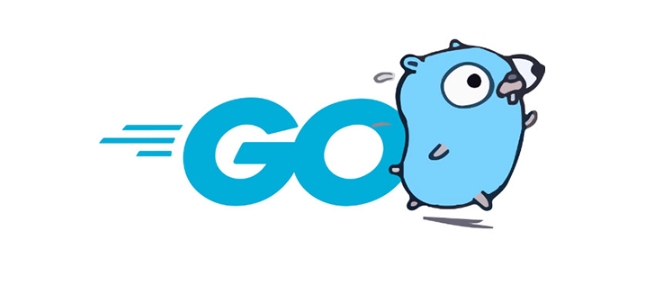The key to deploying a Go application is to generate static binary files and run them correctly. 1. Use GOOS=linux GOARCH=amd64 go build -ldflags="-s -w" -o myapp to build thin static binary files. 2. Transfer binary files to Linux server through scp and grant execution permissions using chmod x. 3. Configure systemd services (such as /etc/systemd/system/myapp.service) to implement process guardianship and run sudo systemctl enable and start startup services. 4. When deploying cloud platforms, Heroku needs to add Procfile and deploy it through git push. AWS EC2 or GCP can directly upload binary files, while Elastic Beanstalk or App Engine supports automatic source code push construction. 5. It is recommended to use Docker to generate lightweight images through multi-stage construction of Dockerfile, docker build and run containers, and push them to the image repository for use in platforms such as Kubernetes or ECS. 6. Environment variable management configuration should be set in the production environment to avoid hard-code sensitive information, use non-root users to run applications, and combine Nginx or Caddy as reverse proxy to process SSL and routing to ensure security and stability. The whole process is simple, efficient and reliable.

Deploying a Go application doesn't have to be complicated. Since Go compiles to a single binary, deployment is often simpler than with other languages. Here's how to do it right.

? Build a Static Binary
Before deploying, make sure your Go app compiles into a standalone binary that doesn't rely on external dependencies.
GOOS=linux GOARCH=amd64 go build -o myapp
This builds a Linux 64-bit binary even if you're on macOS or Windows. Use GOOS and GOARCH to target your server's OS and architecture.

Pro tip: Use
-ldflags="-s -w"to strip debug info and reduce binary size:go build -ldflags="-s -w" -o myapp
? Deploy to a Linux Server (Most Common Way)
Transfer the binary to your server Use
scporrsync:
scp myapp user@your-server:/home/user/
Make it executable
chmod x myapp
Run it directly
./myapp
Use a process manager (like systemd) to keep it running
Create a service file:
/etc/systemd/system/myapp.service[Unit] Description=My Go App After=network.target [Service] Type=simple User=appuser WorkingDirectory=/home/user ExecStart=/home/user/myapp Restart=always [Install] WantedBy=multi-user.target
Then:
sudo systemctl enable myapp sudo systemctl start myapp
?? Deploy to the Cloud (eg, AWS, GCP, or Heroku)
Heroku (quick option)
- Add a
Procfile:web: myapp
- Make sure the binary is built for Heroku's Linux environment.
- Use the Heroku CLI:
git push heroku main
AWS EC2 or GCP Compute Engine
- Same as the Linux server method above.
- Upload via SSH and run with systemd or Docker.
AWS Elastic Beanstalk / Google App Engine
- Use Go runtime support.
- Just push your source code, and the platform builds and runs it.
? Use Docker (Recommended for Consistency)
Create a Dockerfile :
# Build stage FROM golang:1.21-alpine AS builder WORKDIR /app COPY . . RUN go build -o myapp . # Final stage FROM alpine:latest RUN apk --no-cache add ca-certificates WORKDIR /root/ COPY --from=builder /app/myapp . EXPOSE 8080 CMD ["./myapp"]
Build and run:
docker build -t myapp . docker run -d -p 8080:8080 myapp
Push to a registry (eg, Docker Hub, ECR) and deploy to Kubernetes, ECS, or any container platform.
? Don't Forget: Environment & Security
- Set environment variables (eg,
PORT, database URLs). - Don't hardcode secrets — use
.envfiles (with caution) or secret managers. - Run the app under a non-root user in production.
- Use a reverse proxy (like Nginx or Caddy) for SSL termination and better routing.
Basically, deploy Go by building a clean binary, moving it to your server (or container), and running it with proper process management. It's simple, fast, and reliable.
The above is the detailed content of How to deploy a Go application?. For more information, please follow other related articles on the PHP Chinese website!

Hot AI Tools

Undress AI Tool
Undress images for free

Undresser.AI Undress
AI-powered app for creating realistic nude photos

AI Clothes Remover
Online AI tool for removing clothes from photos.

Clothoff.io
AI clothes remover

Video Face Swap
Swap faces in any video effortlessly with our completely free AI face swap tool!

Hot Article

Hot Tools

Notepad++7.3.1
Easy-to-use and free code editor

SublimeText3 Chinese version
Chinese version, very easy to use

Zend Studio 13.0.1
Powerful PHP integrated development environment

Dreamweaver CS6
Visual web development tools

SublimeText3 Mac version
God-level code editing software (SublimeText3)
 How does the switch statement work in Go?
Jul 30, 2025 am 05:11 AM
How does the switch statement work in Go?
Jul 30, 2025 am 05:11 AM
Go's switch statement will not be executed throughout the process by default and will automatically exit after matching the first condition. 1. Switch starts with a keyword and can carry one or no value; 2. Case matches from top to bottom in order, only the first match is run; 3. Multiple conditions can be listed by commas to match the same case; 4. There is no need to manually add break, but can be forced through; 5.default is used for unmatched cases, usually placed at the end.
 Using the Context Package in Go for Cancellation and Timeouts
Jul 29, 2025 am 04:08 AM
Using the Context Package in Go for Cancellation and Timeouts
Jul 29, 2025 am 04:08 AM
Usecontexttopropagatecancellationanddeadlinesacrossgoroutines,enablingcooperativecancellationinHTTPservers,backgroundtasks,andchainedcalls.2.Withcontext.WithCancel(),createacancellablecontextandcallcancel()tosignaltermination,alwaysdeferringcancel()t
 Building Performant Go Clients for Third-Party APIs
Jul 30, 2025 am 01:09 AM
Building Performant Go Clients for Third-Party APIs
Jul 30, 2025 am 01:09 AM
Use a dedicated and reasonably configured HTTP client to set timeout and connection pools to improve performance and resource utilization; 2. Implement a retry mechanism with exponential backoff and jitter, only retry for 5xx, network errors and 429 status codes, and comply with Retry-After headers; 3. Use caches for static data such as user information (such as sync.Map or Redis), set reasonable TTL to avoid repeated requests; 4. Use semaphore or rate.Limiter to limit concurrency and request rates to prevent current limit or blocking; 5. Encapsulate the API as an interface to facilitate testing, mocking, and adding logs, tracking and other middleware; 6. Monitor request duration, error rate, status code and retry times through structured logs and indicators, combined with Op
 how to properly copy a slice in go
Jul 30, 2025 am 01:28 AM
how to properly copy a slice in go
Jul 30, 2025 am 01:28 AM
To correctly copy slices in Go, you must create a new underlying array instead of directly assigning values; 1. Use make and copy functions: dst:=make([]T,len(src));copy(dst,src); 2. Use append and nil slices: dst:=append([]T(nil),src...); both methods can realize element-level copying, avoid sharing the underlying array, and ensure that modifications do not affect each other. Direct assignment of dst=src will cause both to refer to the same array and are not real copying.
 Working with Time and Dates in Go
Jul 30, 2025 am 02:51 AM
Working with Time and Dates in Go
Jul 30, 2025 am 02:51 AM
Go uses time.Time structure to process dates and times, 1. Format and parse the reference time "2006-01-0215:04:05" corresponding to "MonJan215:04:05MST2006", 2. Use time.Date(year, month, day, hour, min, sec, nsec, loc) to create the date and specify the time zone such as time.UTC, 3. Time zone processing uses time.LoadLocation to load the position and use time.ParseInLocation to parse the time with time zone, 4. Time operation uses Add, AddDate and Sub methods to add and subtract and calculate the interval.
 How to use template.ParseFS with go embed?
Jul 30, 2025 am 12:35 AM
How to use template.ParseFS with go embed?
Jul 30, 2025 am 12:35 AM
Use the template.ParseFS and embed package to compile HTML templates into binary files. 1. Import the embed package and embed the template file into the embed.FS variable with //go:embedtemplates/.html; 2. Call template.Must(template.ParseFS(templateFS,"templates/.html")))) to parse all matching template files; 3. Render the specified in the HTTP processor through tmpl.ExecuteTemplate(w,"home.html", nil)
 How to import a local package in Go?
Jul 30, 2025 am 04:47 AM
How to import a local package in Go?
Jul 30, 2025 am 04:47 AM
To import local packages correctly, you need to use the Go module and follow the principle of matching directory structure with import paths. 1. Use gomodinit to initialize the module, such as gomodinitexample.com/myproject; 2. Place the local package in a subdirectory, such as mypkg/utils.go, and the package is declared as packagemypkg; 3. Import it in main.go through the full module path, such as import "example.com/myproject/mypkg"; 4. Avoid relative import, path mismatch or naming conflicts; 5. Use replace directive for packages outside the module. Just make sure the module is initialized
 What are runes in Go?
Jul 31, 2025 am 02:15 AM
What are runes in Go?
Jul 31, 2025 am 02:15 AM
AruneinGoisaUnicodecodepointrepresentedasanint32,usedtocorrectlyhandleinternationalcharacters;1.Userunesinsteadofbytestoavoidsplittingmulti-byteUnicodecharacters;2.Loopoverstringswithrangetogetrunes,notbytes;3.Convertastringto[]runetosafelymanipulate







